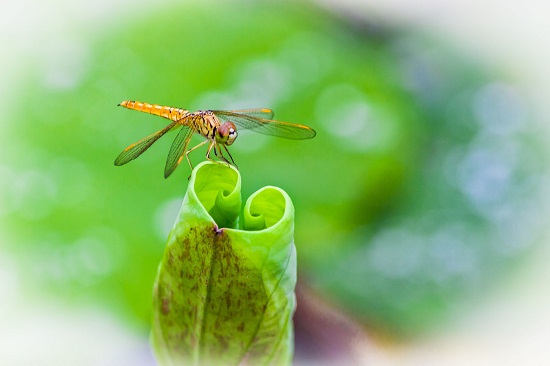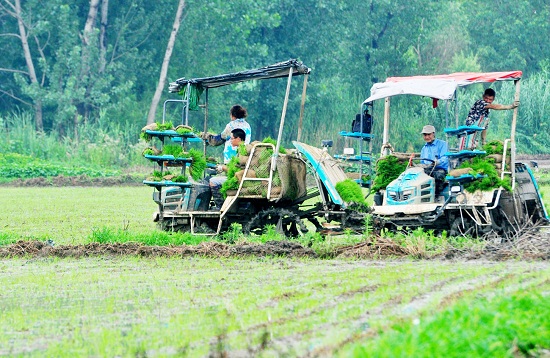Locals in Yangzhou enjoy summer in a variety of ways. Frequent rain around this year's Summer Solstice has lowered temperatures and preented a great opportunity for sowing.
The traditional Chinese lunar calendar divides the year into 24 solar terms. The Summer Solstice ("夏至" in Chinese), the 10th solar term of the year, fell on June 21 this year.
In much of the northern hemisphere, this is the time with the most daylight hours, but not the time with the highest temperatures, which comes 20 to 30 days later.
The 24 solar terms originated in China thousands of years ago to guide agricultural production. But the solar term culture is still alive today, and each term has its own special foods, cultural ceremonies and even healthy living habits.

A dragonfly standing on a lotus leaf in Yangzhou. [Photo/yznews.com.cn]

Villagers plant paddy seedlings in a field in Yangmiao town, Yangzhou, East China's Jiangsu province, on June 21. Sunday marks the Summer Solstice, the 10th solar term on the Chinese lunar calendar. Farmers across the country are busy working in the fields. [Photo/yznews.com.cn]